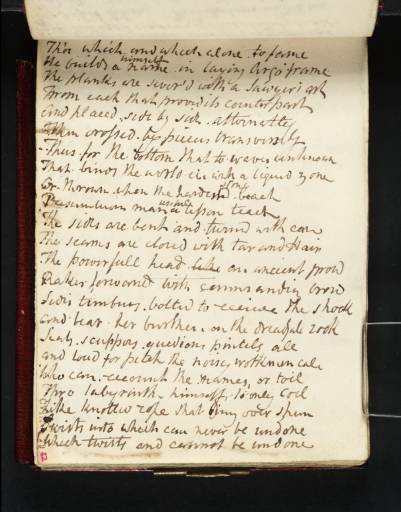This which and which alone to fame
He builds a [‘himself’ inserted above] name in laying Argo frame
The planks are sever’d with a Sawyer’s art
From each that proved its Counterpart
And placed side by side alternatly
Then crossed by pieces transversely
Thus for the bottom that to waves unknown
That binds the world in with a liquid zone
Or thrown upon the hardend [‘stony’ inserted above] beach
Presumtuous man a [‘usefull’ inserted above] lesson teach
The sides are bent and turned with care
The seams are closed with tar and Hair
The powerfull head [‘like’ deleted] an ancient prow
Rakes forward with commanding brow
Sides timbers bolted to receive the shock
And bear her burthen on the dreadfull rock
Sails, scuppers, gridions, pintels all
and loud for pitch the noisy workmen call
Who can recount the names, or toil
Thro labyrinth himself to only coil
Like knotted rope that bining [i.e. ‘binding’] over spun
Twists into which can never be undone
Which twists and cannot be undone
1
